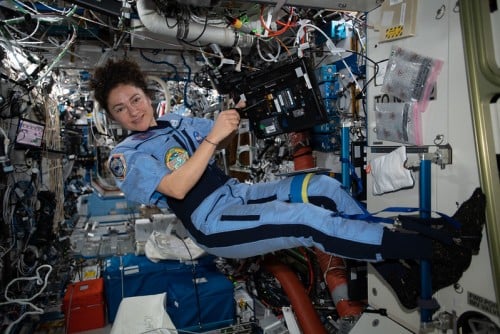A recent study has revealed that the arteries of astronauts remain stable and free of disease for up to five years following their return from the International Space Station (ISS). Published in the *Journal of Applied Physiology* on July 24, 2025, the findings provide new insights into the long-term health impacts of space travel.
The research involved a cohort of 13 NASA astronaut volunteers, aged from their late 30s to late 50s at the time of their ISS missions. Each astronaut spent between four months to nearly a year in space. The study aimed to evaluate the structure and function of their carotid and brachial arteries—located in the neck and arm—by analyzing ultrasound images taken before launch, during their time in space, and at intervals after their return, including up to five years later.
Key findings from this research indicate that most markers of inflammation and oxidative stress present during spaceflight returned to normal within one week of landing. Importantly, the study found no significant increases in carotid artery thickening or stiffness, both of which are associated with future cardiovascular diseases. Furthermore, measures of brachial artery vasodilation, an indicator of overall vascular health, remained stable over the observation period.
While total cholesterol and glucose levels showed moderate increases over seven years, the levels of hemoglobin A1C—a marker for diabetes—remained unchanged, suggesting that the risks of heart disease and diabetes did not escalate as a result of long-duration spaceflight. The researchers utilized a risk estimation tool designed for the general population to assess the astronauts’ likelihood of developing heart disease within the next decade. They noted an increase in risk from 2.6% before spaceflight to 4.6% five years post-return. However, when employing a tool tailored to individuals with similar health backgrounds to astronauts, the risk increased only slightly by an additional 0.5%.
The astronauts reported maintaining an active lifestyle following their missions, including those who retired from the astronaut corps. The research team highlighted that the natural aging process accounted for the majority of the observed increase in cardiovascular risk.
The study concluded with a strong message regarding the resilience of astronauts’ cardiovascular systems. “Most indices of arterial structure and function in ISS astronauts were not different than preflight, and there were no signs, symptoms, or diagnoses of cardiovascular disease during the first five years after returning to Earth from long-duration spaceflight,” the researchers stated.
This research has been recognized as a significant contribution to the field, selected as one of the “best of the best” articles by the American Physiological Society. For further insights, the full study titled “Arterial Structure and Function in the Years after Long-duration Spaceflight” is available in the latest issue of the journal.
As the exploration of space continues to advance, understanding the health implications for astronauts remains crucial. The findings from this study not only offer reassurance regarding cardiovascular health post-spaceflight but also contribute to broader discussions on the long-term effects of human adaptation to extreme environments.
